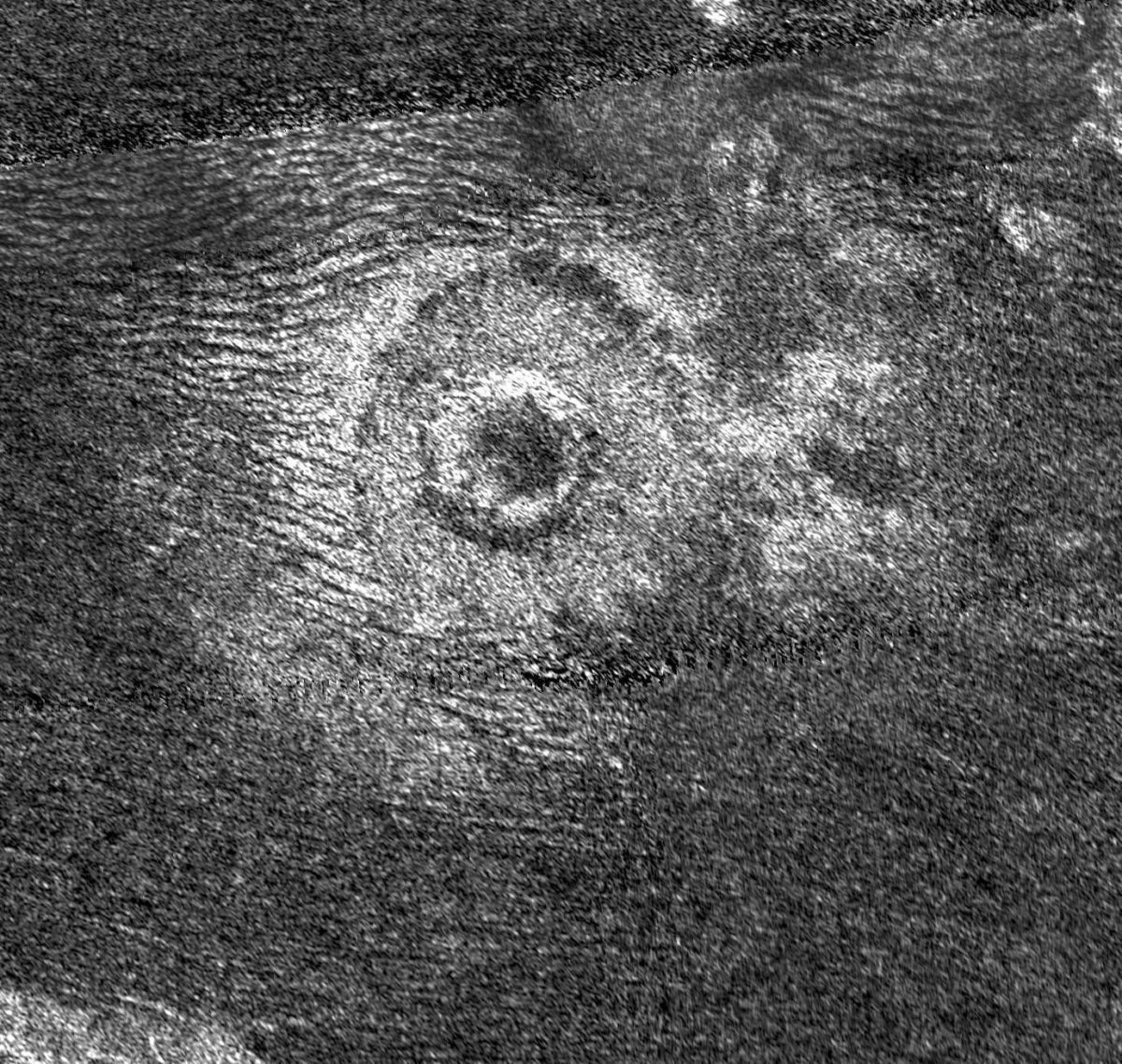Bruce Murray Space Image Library
Newly discovered crater on Titan

Dunes, visible as dark lines on the left of the image, have been swept toward the crater by the winds of Titan. These dunes have encroached very little onto the bright ejecta, compared to those on Ksa where more than a third of the ejecta blanket on its western edge is covered by dunes.
While Saturn's other moons have many thousands of craters, Titan has very few. One reason is that Titan's dense atmosphere burns up the smaller impacting bodies before they can reach the surface. The craters that do form are often hard to recognize or disappear entirely as they are eroded over time by geological processes such as the wind-driven motion of sand and, possibly, icy volcanism.
This synthetic-aperture radar (SAR) image, centered at 12 degrees north latitude and 45 degrees west longitude, measures 150 miles (242 kilometers) high by 160 miles (257 kilometers) wide, with resolution of about 350 meters per pixel; north is at the top, and the image is illuminated from the bottom. Incidence angle varies from 15 to 25 degrees. NASA / JPL-Caltech


 Explore Worlds
Explore Worlds Find Life
Find Life Defend Earth
Defend Earth

